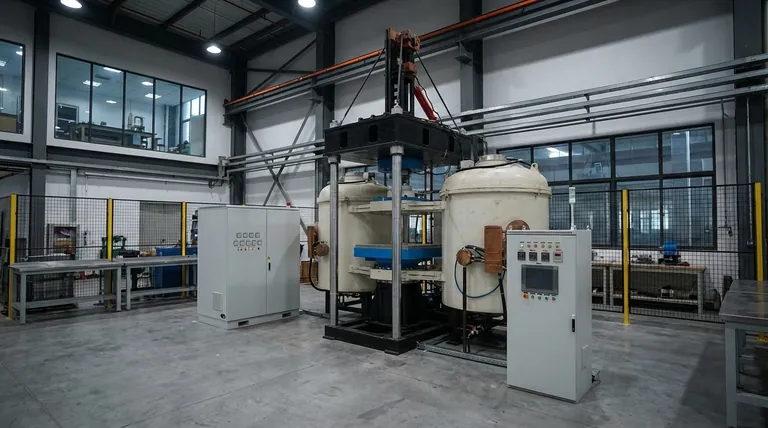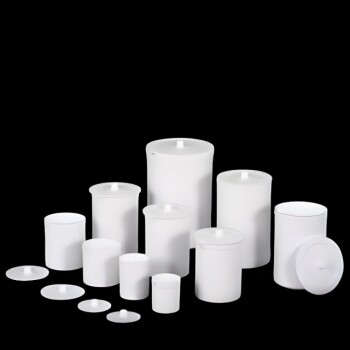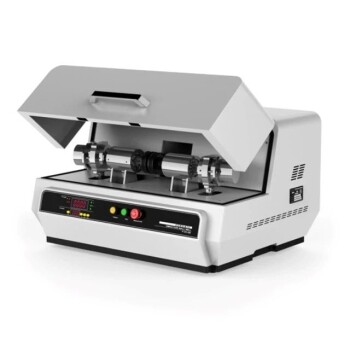While induction heating offers remarkable efficiency and speed, it is not without its drawbacks. The primary disadvantages are its strict requirement for specific magnetic cookware, a significantly higher initial purchase price compared to gas or electric counterparts, the potential for audible buzzing or humming during operation, and a glass surface that is susceptible to scratching.
The disadvantages of induction are not inherent flaws, but rather specific operational requirements and trade-offs. Its limitations center on its dependence on ferromagnetic cookware and a higher initial investment, which are the necessary costs for its speed and efficiency.

The Cookware Constraint: A Magnetic Personality
The single greatest hurdle for many considering induction is the cookware. The technology's heating method is fundamentally different from gas or electric resistance, which leads to strict material requirements.
The Ferromagnetic Requirement
Induction works by generating a magnetic field that induces an electrical current directly within the pot or pan. For this to happen, the cookware must be ferromagnetic, meaning it contains iron.
Materials like aluminum, copper, and glass will not heat up on an induction cooktop because they are not magnetic. A simple test is to see if a refrigerator magnet sticks firmly to the bottom of the pan; if it does, it will work with induction.
The Cost of New Cookware
This requirement often means that a significant portion of a person's existing cookware collection may become obsolete. The cost of replacing pots and pans with induction-compatible versions can be a substantial, and often overlooked, secondary expense.
Pan Detection and Sizing Issues
Induction cooktops have sensors that must detect a compatible pan before the element will activate. If a pan is too small, has an uneven bottom, or is not centered correctly on the heating zone, the cooktop may not recognize it and will fail to turn on.
Financial and Installation Considerations
Beyond cookware, the initial and long-term financial commitments for induction technology are typically higher than for traditional alternatives.
The Higher Upfront Cost
Induction cooktops and ranges are consistently more expensive to purchase than comparable gas or electric models. This premium is for the advanced magnetic coil technology, sophisticated power controls, and the glass-ceramic surface.
Potential for Electrical Upgrades
While many 120V portable induction units can plug into a standard outlet, full-size cooktops are powerful 240V appliances. In an older home or a kitchen not wired for a high-amperage electric stove, installing an induction cooktop may require costly work by an electrician to run a new, dedicated circuit.
Repair Complexity
The solid-state electronics that control an induction cooktop are complex. If a component fails, repairs are not as straightforward as replacing a gas igniter or a simple electric coil. This often necessitates a specialized technician and can lead to more expensive repair bills.
Understanding the Trade-offs: Efficiency vs. Practicality
Choosing induction means accepting certain trade-offs. The benefits of speed and safety come with specific limitations that are important to understand.
The Price of Speed and Safety
The cookware restrictions and higher cost are the price you pay for unparalleled heating speed and a safer kitchen. Because the surface itself doesn't get hot (only the pan does), induction cooktops are much safer, with a lower risk of burns and no open flame.
The Learning Curve for Control
While induction offers incredibly precise power levels (e.g., 1-10), this digital control can feel less intuitive than the visual feedback of a gas flame. Learning how to achieve a delicate simmer without the food "pulsing" (as the magnetic coil cycles on and off at low settings) can take practice.
The Fragility of the Glass Surface
Like electric smoothtops, induction cooktops have a glass-ceramic surface. While durable against heat, it can be scratched by dragging heavy cast-iron pans or broken if a heavy object is dropped on it. This requires more careful handling than a rugged gas grate.
The Audible Buzzing and Fan Noise
Induction cooktops often produce a low-level buzzing or humming sound, especially at high power settings. This is a normal result of the magnetic field cycling at high frequency. Additionally, internal fans run to cool the electronics, adding another layer of low-level noise that is absent in gas cooking.
Making the Right Choice for Your Goal
Ultimately, the "disadvantages" of induction are only disadvantages if they conflict with your specific needs and priorities.
- If your primary focus is budget and using existing cookware: A traditional gas or electric range is a more practical and cost-effective choice.
- If your primary focus is speed, energy efficiency, and kitchen safety: The upfront cost and cookware requirements of induction are a worthwhile investment for its superior performance and safety features.
- If you are a demanding cook who values rapid response: The precise, instant power adjustments of induction are a powerful tool, provided you are willing to adapt to its unique cookware needs and control system.
Understanding these limitations empowers you to select a heating technology that aligns perfectly with your budget, priorities, and cooking style.
Summary Table:
| Disadvantage | Key Impact |
|---|---|
| Cookware Constraint | Requires ferromagnetic (magnetic) pots and pans; existing aluminum/copper cookware won't work. |
| High Upfront Cost | Higher purchase price than gas/electric models; may require electrical upgrades. |
| Audible Operation | Produces buzzing/humming at high power and fan noise for cooling electronics. |
| Fragile Surface | Glass-ceramic top is susceptible to scratching and can crack if impacted. |
| Learning Curve | Digital controls require adaptation for low-temperature simmering without pulsing. |
Upgrade your lab's heating capabilities with precision and efficiency. If you're evaluating heating solutions for your laboratory, KINTEK's range of advanced lab equipment, including induction heaters, is designed to meet rigorous scientific standards. Our products offer the speed, safety, and control your research demands. Contact our experts today to find the perfect heating solution for your specific needs and ensure your lab operates at peak performance.
Visual Guide

Related Products
- 600T Vacuum Induction Hot Press Furnace for Heat Treat and Sintering
- Platinum Sheet Electrode for Laboratory and Industrial Applications
- Silicon Carbide SiC Thermal Heating Elements for Electric Furnace
- Lab-Scale Vacuum Induction Melting Furnace
- High Pressure Laboratory Vacuum Tube Furnace Quartz Tubular Furnace
People Also Ask
- Why are brazed joints subjected to fatigue failure? Understanding the Critical Factors for Long-Lasting Joints
- Can you get an electrical arc in vacuum? How High Voltage Creates Plasma in a Void
- What products are made by hot pressing? Achieve Maximum Density and Performance for Your Components
- How does hot pressing work? Achieve Maximum Density for Advanced Materials
- What is the effect of increasing the pressure during sintering? Achieve Maximum Density and Superior Performance


















